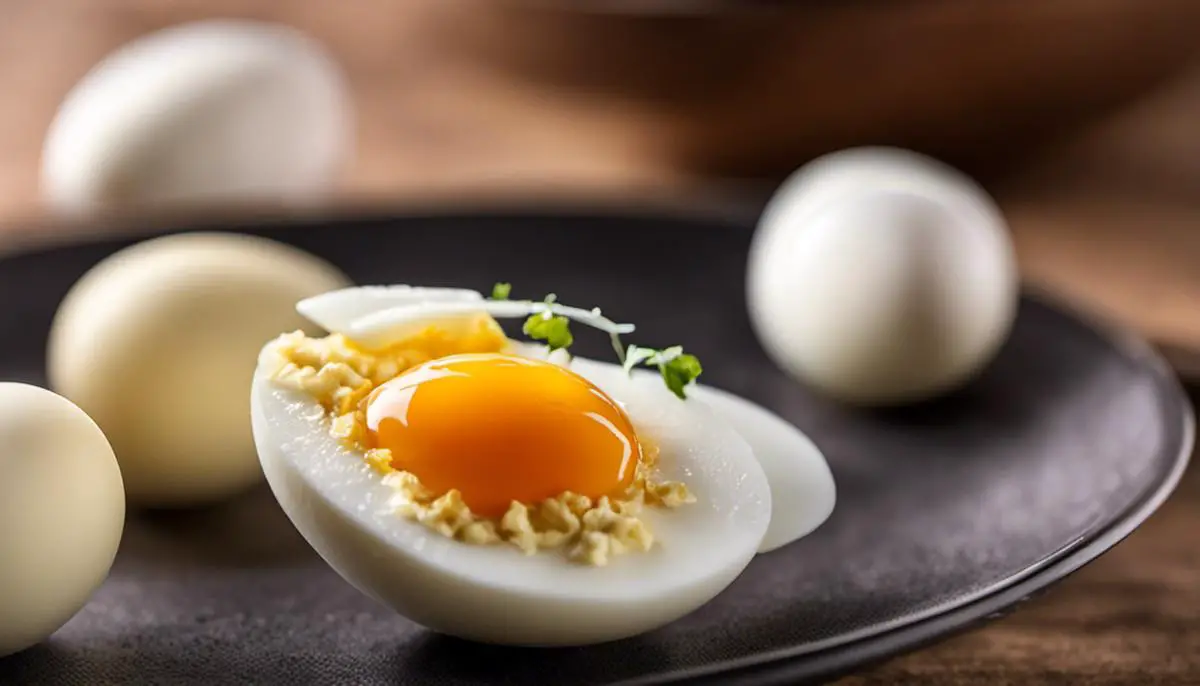Deviled eggs, a classic culinary delight celebrated worldwide, are a testament to the beauty of simplicity in cooking. The crux of this delicacy lies in mastering the basic yet essential boiling technique to create perfectly peelable, aesthetically pleasing world’s best deviled eggs. Akin to any other culinary masterpiece, understanding the fundamental roles of a fresh egg versus an older one constitutes an integral part of this learning curve.
Beyond the art of boiling eggs, creating deviled eggs is all about understanding the symphony of flavors and making it resonate within one simple shell. This discourse will delve into the versatile realm of ingredients that can be used to make deviled eggs, providing an enlightening exploration within both traditional and gourmet horizons.
The Basics of Boiling Eggs
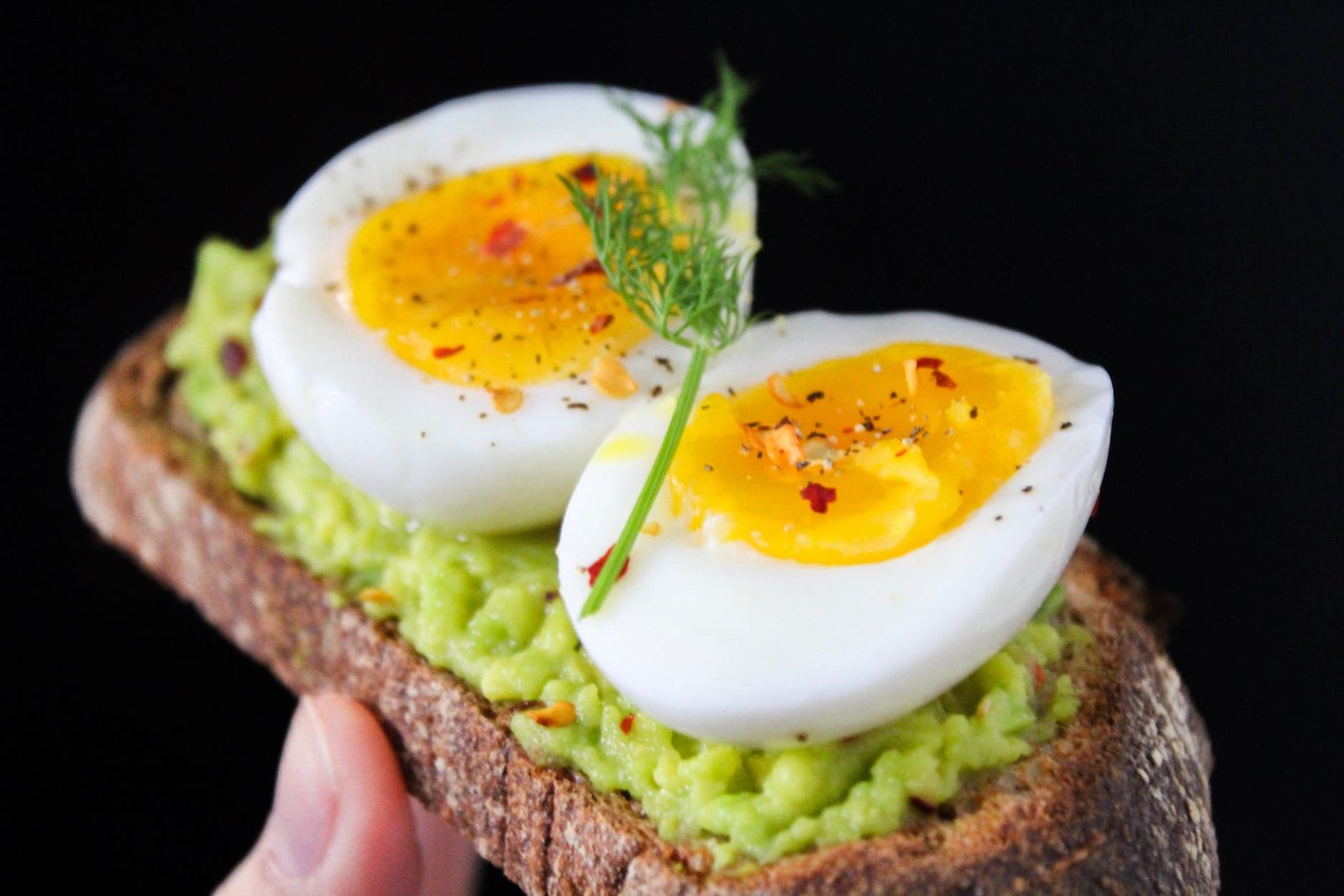
Understanding the Basics: Fresh vs. Older Eggs
Before you start your journey in creating the world’s best-deviled eggs, you must understand the difference between fresh and older eggs. Fresh eggs are generally less than a week old, while older eggs are more than a week old. The age of an egg significantly impacts its peeling ease after boiling. Older eggs usually have a larger air cell, which makes peeling simpler.
The Boiling Process: An Important First Step
In creating perfectly deviled eggs, the boiling process plays an essential role. Firstly, place your eggs gently into a pot and add enough water to cover the eggs with an inch to spare. Avoid crowding the pot – it is crucial that water circulates easily around each egg.
Once you have sufficient water, bring it to a boil over medium-high heat. When the water reaches a full boil, remove the pot from the heat and cover it. Let the eggs sit in the hot water. For large eggs, 9-12 minutes should suffice, while extra-large eggs might need 12-15 minutes. Medium eggs usually take 6 to 9 minutes.
Practicing the Ice Bath Technique
Immediately following the boiling process, drain the hot water from the pot and transfer eggs to an ice bath. The quick cooling helps to stop the cooking process and makes shells peel off easily. Ensure the eggs cool completely before you try to peel them.
Peeling: The Final Step Before Deviling
Once your eggs are fully cooled, gently tap each egg on a hard surface until you see a network of small cracks. Roll the egg between your palms to loosen the peel. Peel off the shell under running cold water to wash away any tiny shell fragments.
Timely Tips: Fresh vs. Older Eggs Boiling Duration
The boiling duration can vary depending on the age of the egg. Fresh eggs are trickier to peel and might require extra time in the boiling water, while older eggs peel with less struggle. Fresh eggs might benefit from a 1-2 minute additional boiling time or a longer sitting period in the hot water.
By mastering these basic techniques on boiling eggs, you can ensure a perfectly peeled canvas for your delicious deviled egg recipes. Whether you are using fresh or older eggs, remember the key to successful deviled eggs is in the preparation.
Choosing and Mixing Ingredients
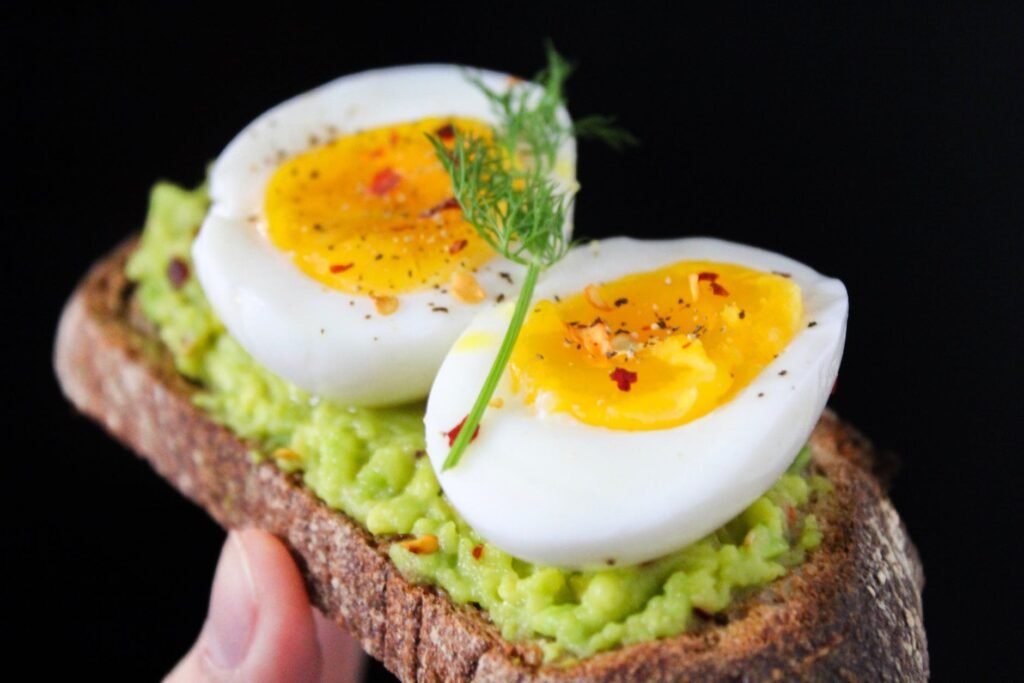
Choosing and Identifying Quality Ingredients
To make the world’s best deviled eggs, you first need to choose high-quality, fresh ingredients. Starting with fresh eggs is vital. The fresher the eggs, the richer the taste, and the better your deviled eggs will be. Eggs should be firm with no cracks. Besides eggs, you will need mayonnaise, dijon mustard, vinegar, salt, and pepper.
For a gourmet touch, you can use ingredients like smoked salmon, truffle oil, bacon, capers, caviar, dill sprigs, pickles, or olives. Additionally, you can also consider herbs like parsley, paprika, or chives for topping. In choosing these ingredients, ensure they are as fresh as possible. If using any meat products like bacon, make sure they are well-cooked before adding to your egg mixture.
Preparation and Mixing of Ingredients
Once you have all the ingredients, the next step is preparation and mixing. Start by boiling the eggs until they are hard-boiled and allow them to cool. Once cooled, peel them and cut them lengthwise. Carefully remove the yolks and place them in a separate bowl.
In the bowl with the yolks, add in mayonnaise and dijon mustard to taste. Typically, a ratio of about 3 tablespoons of mayonnaise to 1 tablespoon of mustard works well for around six eggs. Add in a splash of vinegar, which gives the mix a little tang, and season with salt and pepper. Mash this mixture until it’s smooth. You can use a fork, but for a smoother texture, a food processor can do the job perfectly.
The Gourmet Touch to Deviled Eggs
To take your deviled eggs up a notch, consider the unique ingredients mentioned earlier. If using smoked salmon, finely chop it and add to your yolk mixture. For a touch of truffle, a few drops of truffle oil into the mixture will enhance the aroma and flavor. If using bacon, capers, or pickles, finely dice your chosen ingredient and add it into the mix. Amounts can be adjusted according to taste and the number of eggs you’re making.
For toppings, sprinkle each egg with paprika or chopped parsley. If using caviar, place a small amount on top of each egg. Olives can be sliced and placed on the top too. Regardless of the topping, remember these are meant to complement the deviled eggs, not overwhelm them. Use them sparingly but strategically for the most aesthetic and flavorful results.
All these gourmet touches provide differing layers of flavor, enhancing the overall complexity and uniqueness of your deviled eggs. Always remember, the key to the world’s best deviled eggs lies in the quality and freshness of your ingredients and the balance in combining and presenting them.
Presentation and Garnishing Tips
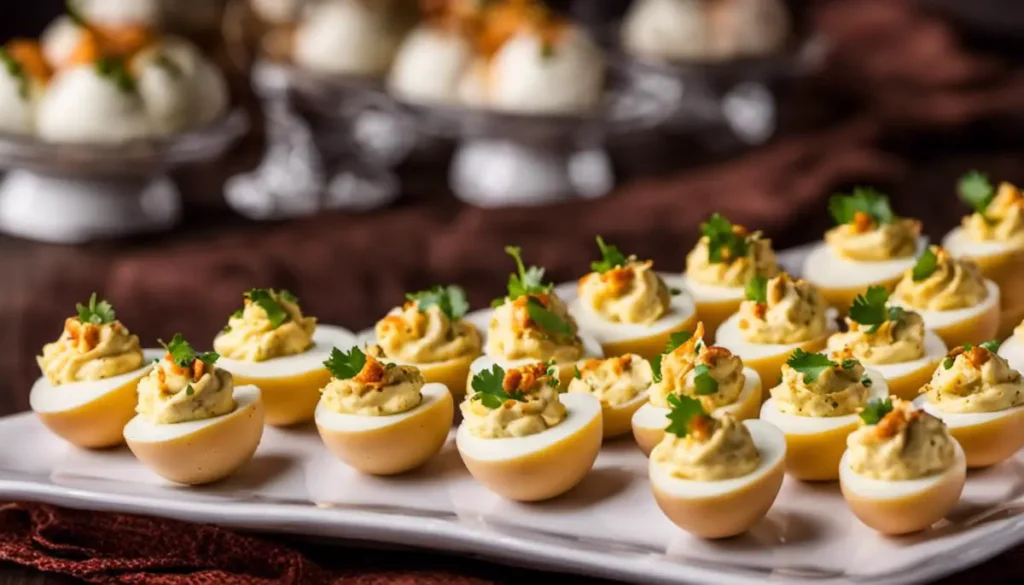
Mastering the Filling: The First Step to Perfect Deviled Eggs
Crafting the perfect deviled egg begins with care and precision filling the egg white shells with the yolk mixture. Pipe the yolk mixture into the egg whites neatly using a bold maneuver; use a piping bag or a plastic zip bag with one corner cut off. This method will give you more control over the amount of yolk mixture dispensed and where it lands.
For a professional look, ensure your yolks are mixed until they are completely smooth. Remove any and all clumps and create a creamy texture by adding your ingredients slowly and tasting as you go. Then, fill the concave areas of the egg white shells with the yolk mixture to the brim, avoiding any overflow.
Presentation: Plating Your Deviled Eggs
Once your eggs are filled, prioritize the presentation. Choose a platter that allows the eggs to sit flat and stable. It’s best to utilize a deviled egg platter, specifically designed with shallow, egg-shaped indentations, to prevent the eggs from rolling around the plate.
Arrange the eggs symmetrically on the platter in a circular pattern for a classic yet appealing presentation. The eggs can be set in straight lines for a more contemporary and linear appearance.
Garnishments should complement your culinary creation rather than overshadow it. Allowing a space in the center of the platter to incorporate additional garnishes can also add to the overall presentation.
The Art of Garnishing Deviled Eggs
The top of each deviled egg is like a blank canvas waiting for your garnish masterpiece. Garnishes not only add visual appeal but also enhances flavor. Play with textures, colors, and flavors while garnishing to make your eggs bold and beautiful.
Use fresh herbs like dill, chives, and parsley to lend a pop of color and lend a fresh flavor profile to your eggs. Smoked paprika or cayenne pepper could provide a dash of heat and a rich color contrast. You could also use crumbled bacon or tiny shrimp for a non-vegetarian embellishment.
For more texture, consider adding a small dollop of caviar or a pickled caper. Alternatively, finely chopped red onions or bell peppers can add a crunchy element.
With these tips in mind, you can confidently fill, garnish and present your world-class deviled eggs in a way that is not only appetizing but visually stunning. Remember to not only appeal to the taste buds but also to the eyes in your presentation and garnishing attempts.
Trial and Feedback
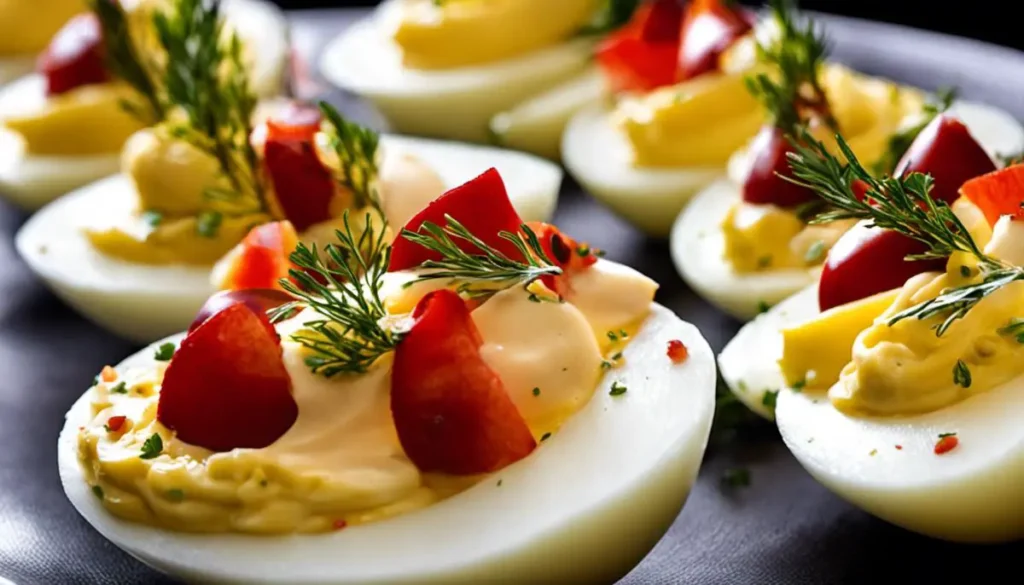
Step 1: Gathering Your Ingredients
The first step in achieving your goal towards making the world’s best deviled eggs is to gather your ingredients. You will need the following: 12 large eggs, mayonnaise, white vinegar, mustard, salt, pepper, and paprika. These are the basic ingredients for making deviled eggs. However, consider exploring other ingredients such as relish, bacon bits, or fresh herbs for added flavor.
Step 2: Preparing Your Eggs
Boil the eggs by placing them in a single layer in a saucepan. Cover with enough water that there’s 1 inch of water above the eggs. Heat on high until water begins to boil then cover, reduce the heat to low, and cook for 1 minute. Remove from heat and leave covered for 14 minutes, then rinse under cold water continuously for 1 minute.
Step 3: Filling the Eggs
Crack egg shells and carefully peel them under cool running water. Gently dry with paper towels. Slice the eggs in half lengthwise, removing yolks to a medium bowl and placing the whites on a serving platter. Mash the yolks into a fine crumble using a fork. Add mayonnaise, vinegar, mustard, salt, and pepper, and mix well.
Step 4: Taste Test Before Serving
Before serving, it’s a great idea to taste test your eggs to get feedback. Ask your family or friends to try one and ask for honest feedback. Is the filling too dry? Add more mayonnaise. Do they need a little more punch? Additional mustard or a splash of vinegar might be needed. If they’re too bland, try adding a bit more salt or a sprinkle of fresh cracked pepper.
Step 5: Adjusting Based on Feedback
Remember, don’t be disappointed if the first batch doesn’t turn out perfect. Use this as a learning opportunity. Consider adding more or less of an ingredient based on what your taste testers suggest. Cooking is a science and it often takes experimentation and multiple trials to get it just right.
Step 6: Filling and Serving
Once you’ve adjusted your filling based on feedback, fill each egg white half with the yolk mixture. Sprinkle paprika or any other garnish on top for an extra hint of flavor and visual appeal. Your deviled eggs are now ready to be enjoyed.
Remember, achieving the title “world’s best deviled eggs” is subjective – what one person finds delicious, another may not. The key is in honing your skills, listening to feedback, and making continual improvements.
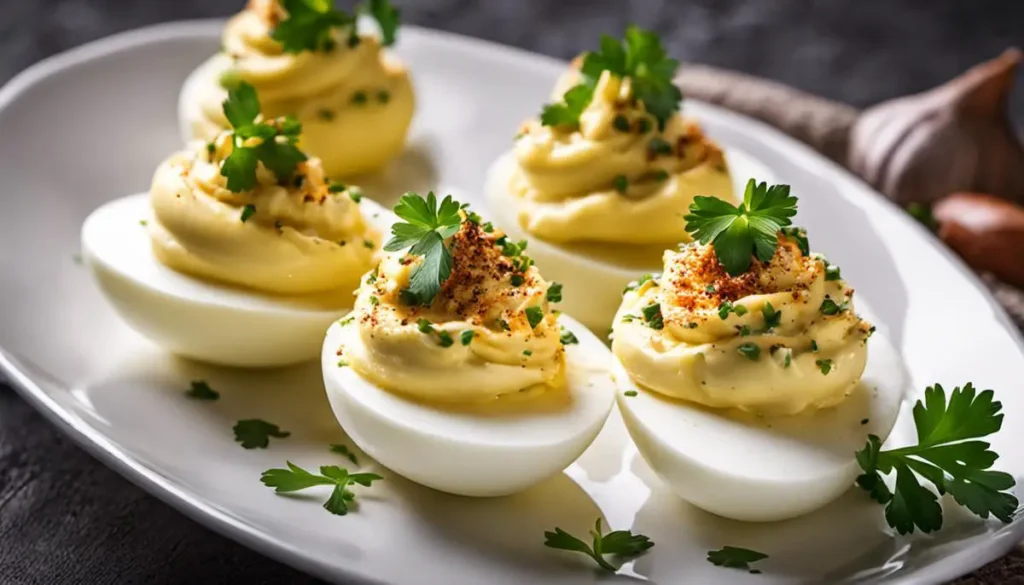
Final Thoughts on the World’s Best Deviled Eggs
As you venture into the myriad trials of creating the perfect batch of deviled eggs, seeking feedback and taste tests from family and friends can offer valuable insights. This process not only enhances the flavor profile of your recipe, but it also nurtures your developing culinary instincts. Moreover, it serves as a unique opportunity to refine your skills in presentation and garnishing, thereby elevating the charm of your deviled eggs to a whole new level. Dedication, curiosity, and an openness to learn from every trial, success and failure alike, turn the journey of mastering deviled eggs into a rewarding, enriching, and sumptuously delectable experience.

